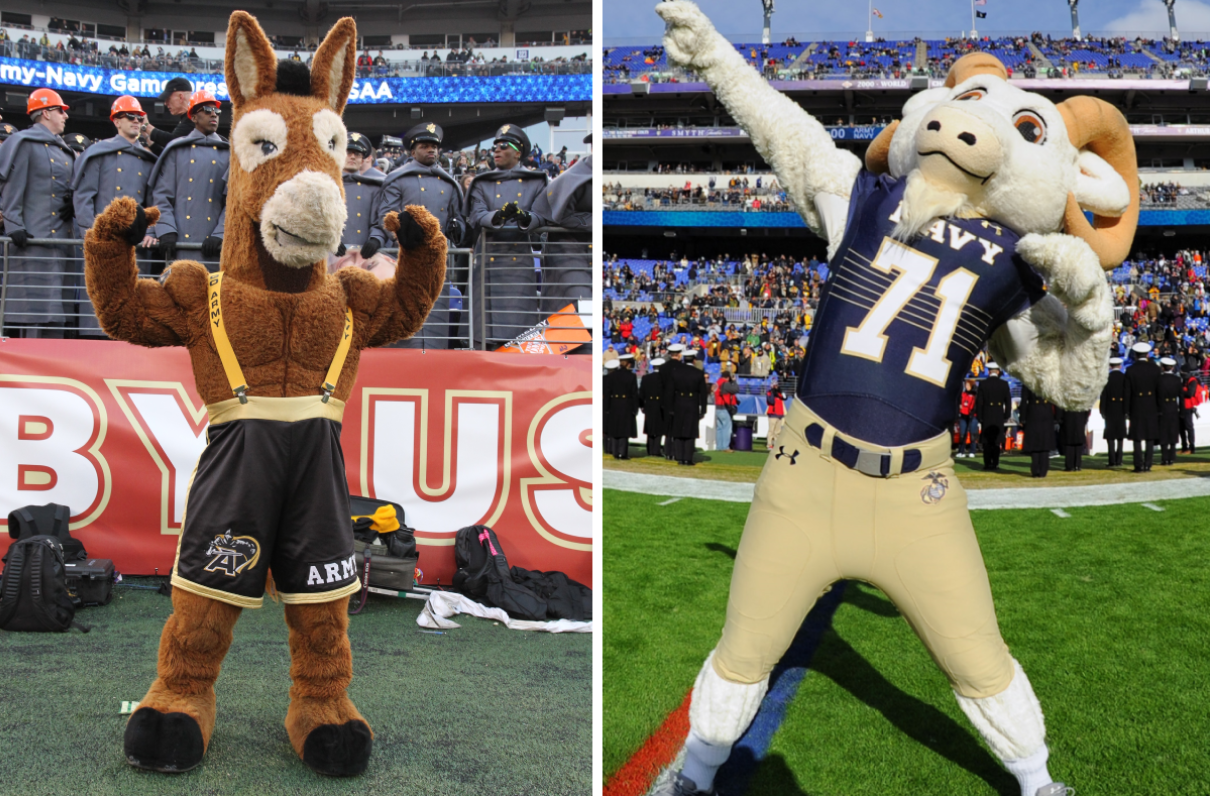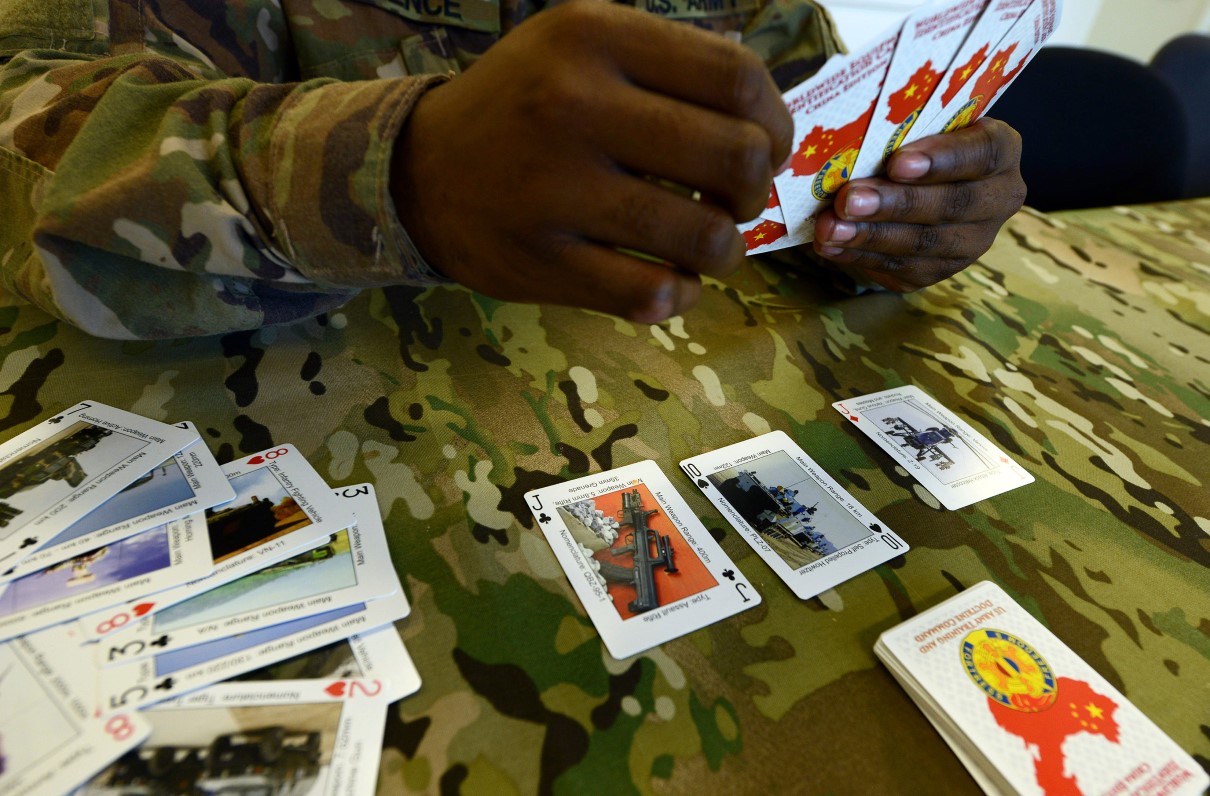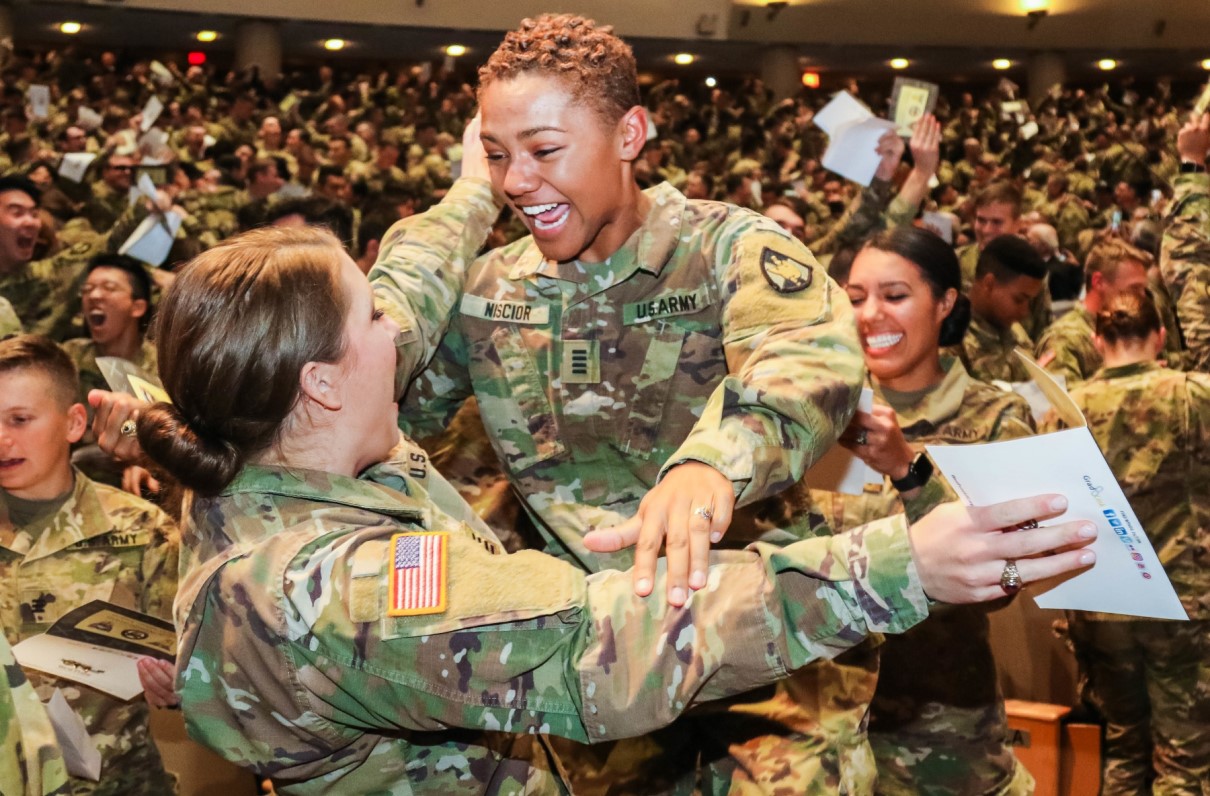By Charlsy Panzino
Mascots encourage support and provide deeper connections within the community, but they are also symbols of history and tradition. That holds even truer for the Army and Navy service academies, where the bond of tradition stays long after graduation day.
Mascots were introduced to both the United States Military Academy (USMA) and Naval Academy (USNA) in the 1800s. The mascots were not only represented in designs and logos, but also as an active presence at sporting events where the audience could see live animals.
In the midshipmen's case, the mascot chose them. In the 1880s, when Navy ships sailed with livestock as a source of food, one goat was spared and given the role of crew pet, according to Shipmate, the academy's alumni magazine.
When the goat died during the voyage, the officers on the ship preserved the hide. Once at port, two ensigns were taking the hide to a taxidermist when they decided to take a detour to the Navy football game, where Navy was losing. One of the ensigns wrapped himself in the hide and raced around the stadium to rally the crowd, according to a Naval Academy spokesperson. Navy won the game, and the goat hide was praised for bringing good luck to the team.
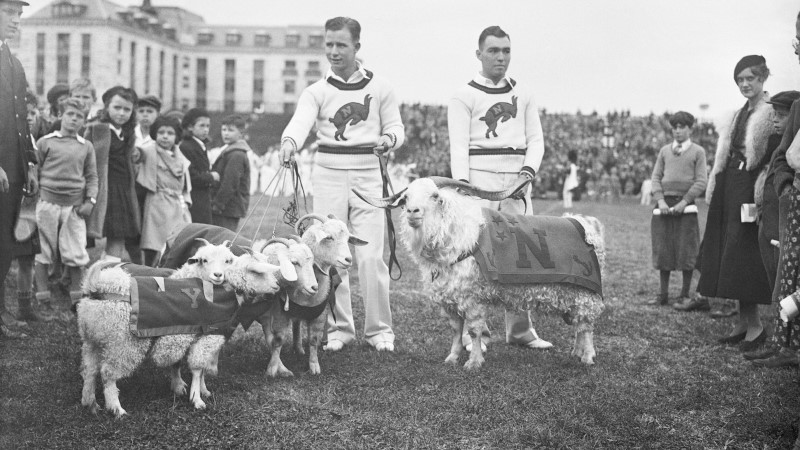
The Naval Academy's goat mascot poses with some mascots-in-training as they man the sidelines for a Navy-Columbia game in 1932. Navy lost, 7-6. (Bettmann via Getty Images)
The academy spokesperson said the goat is a symbol of the "tough, warrior mentality."
According to another legend retold in the magazine, midshipmen at the Naval Academy commandeered a goat for the first Army-Navy football game in 1890. When Navy beat Army 24-0, the luck of the goat mascot stuck.
Either way, Bill the Goat entered into Naval Academy lore.
For West Point, the academy's chosen animal mascot reflected long-standing history in the Army: the mule.
The mule was chosen to counter the Navy's goat at the 1899 rivalry football game, according to the West Point athletics website.
The first mule mascot, who originally pulled an ice wagon, was groomed and outfitted with a collar, gray blanket and leggings with Army-colored streamers attached to his ears and tail.
West Point legend has it that when the two mascots first met, the mule "hoisted that astonished goat toward the Navy stands to the delight of the yelling, laughing crowd," according to a fact sheet about the mules. Army won the game, 17-5.

Army's mascot went Hollywood, sort of, in 1952: Above, Donald O'Connor gets some advice from Francis the Talking Mule in "Francis Goes to West Point." (Universal via Getty Images)
Modern-day Mascots
At the Naval Academy, Bill the Goat is represented by more than one animal, and the goats live in an undisclosed location near Annapolis. The current mascots are Bill 36 and 37, and they live with Bill 33 and 34, who have retired from attending football games.
A 10-member team handles the logistics of transporting the goats to and from the game, along with trips to the veterinarian and to the public. As these goats are known to be "gnarly," the USNA spokesperson said, it can be difficult to prepare them for public appearances. The goats' training regiment, however, is confidential.
The Navy football team will honor Bill the Goat at the Army-Navy game on Dec. 8 by wearing uniforms inspired by the mascot.
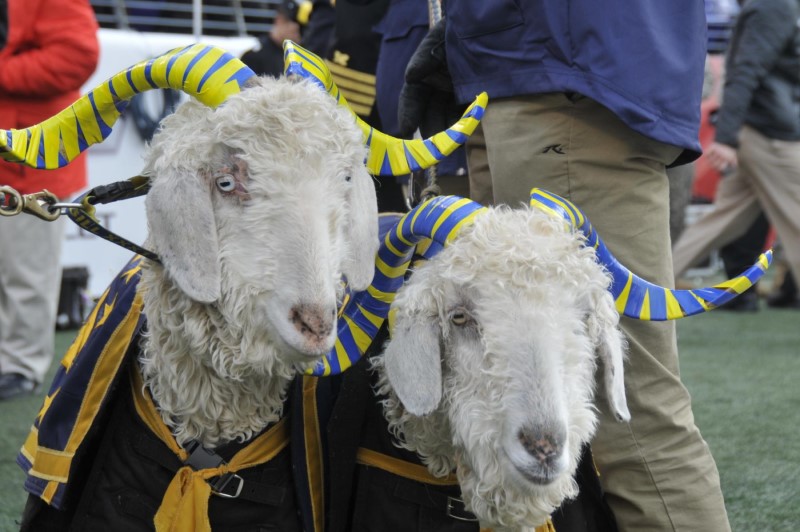
Goats patrol the sidelines in Baltimore prior to the 2014 Army-Navy game. (Jim Dresbach/Joint Base Myer-Henderson Hall)
At West Point, there are two mules currently serving as mascots during sporting events and public appearances. These mules, Ranger III and Stryker, are trained and cared for by cadet mule riders. A mule rider is picked from each incoming class of cadets.
Although mules were present at many of Army's games, it wasn't until 1936 that West Point had its first officially designated mascot.
Mr. Jackson was brought from Remount Station in Front Royal, Va., after serving as a pack mule with the Army.
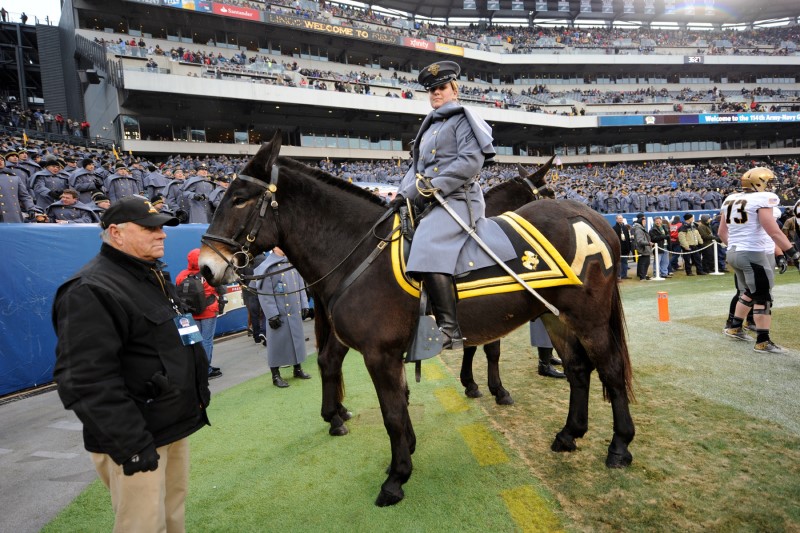
Stryker the mule rallies the cadets prior to the 2013 Army-Navy game in Philadelphia. (Marvin Lynchard/DoD)
In 1939, a second mule arrived. Pancho, also known as Skippy, was an Ecuadorian burro of small stature. Three years later, at the 1942 Army-Navy game, Pancho was disguised as the Navy goat with a hide and horns. His rider was dressed in a midshipman's uniform, according to the West Point athletics website, to make it appear as if someone was riding Bill the Goat into the game.
